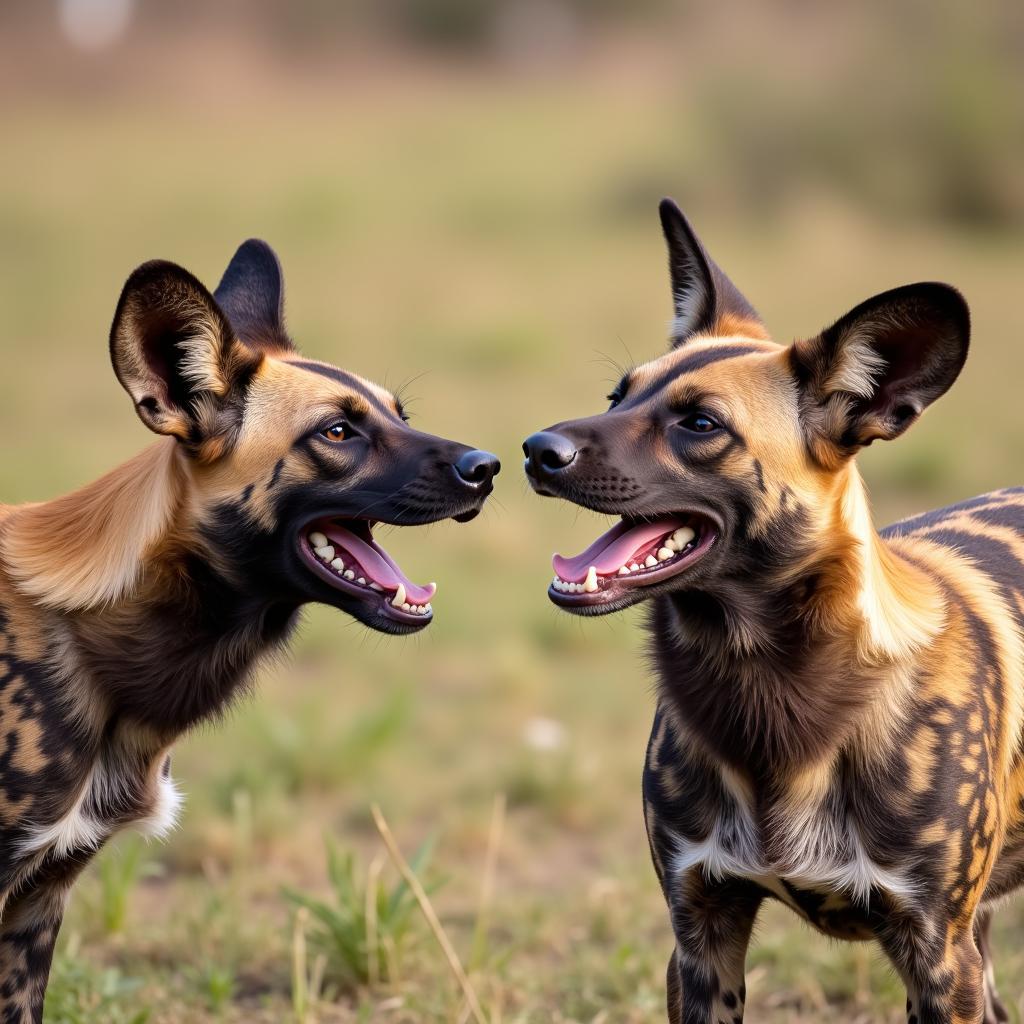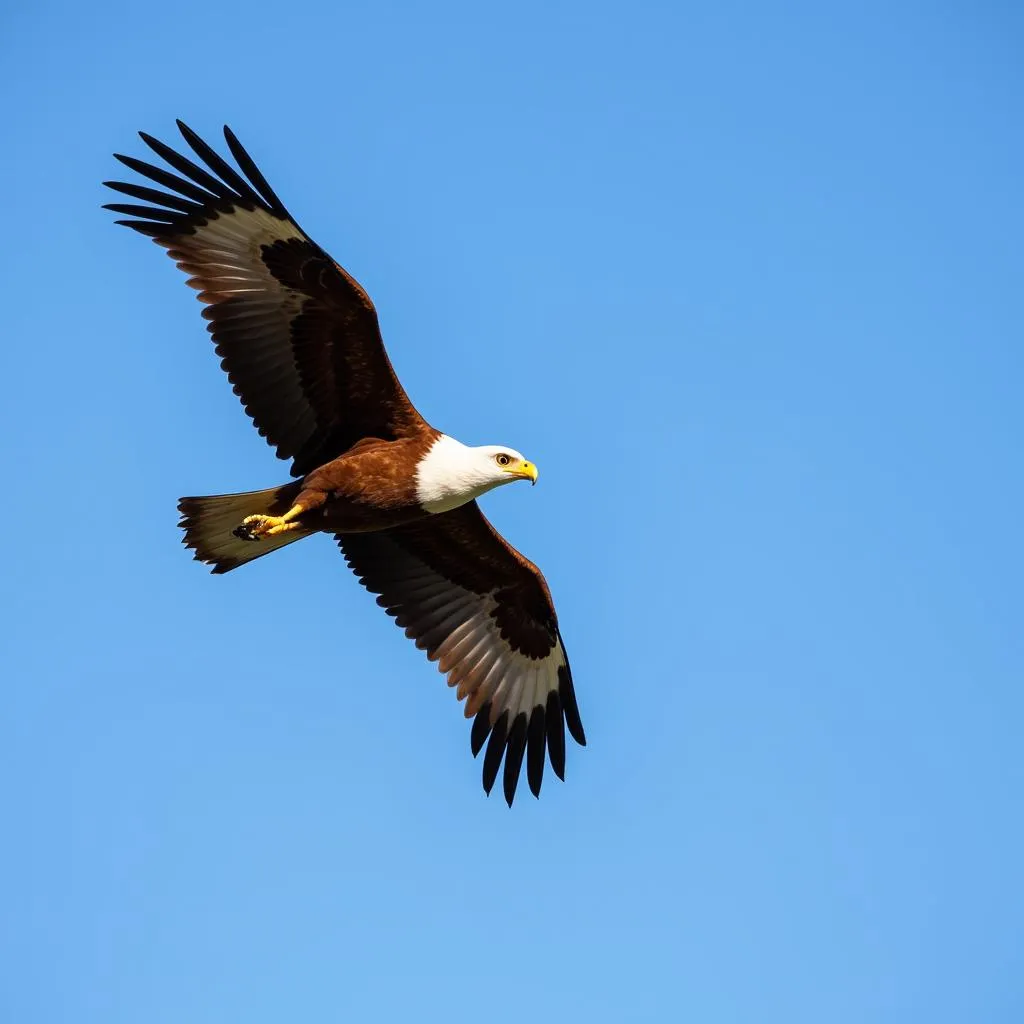The African Wild Dog: A Master of the Hunt
The African wild dog, also known as the painted wolf or Cape hunting dog, is a highly social and intelligent predator that roams the savannas, grasslands, and woodlands of sub-Saharan Africa. These stunning canines are renowned for their striking, patchy coats of fur, large, rounded ears, and incredible teamwork displayed during their hunts. While often overshadowed by their feline counterparts, African wild dogs are a force to be reckoned with, boasting one of the highest hunting success rates in the animal kingdom.
A Pack’s Life: Social Structure and Hierarchy
African wild dogs are incredibly social animals, living in tightly-knit packs that can range in size from a few individuals to over twenty. This complex social structure is governed by a strict dominance hierarchy, with an alpha male and female leading the pack. These dominant individuals are typically the only ones to breed, ensuring the survival of their genes.
Unlike many other canine species, African wild dogs exhibit a remarkable level of altruism. When pups are born, the entire pack participates in raising them, regurgitating food and sharing the responsibility of protection. This cooperative approach is crucial for the survival of the young and reinforces the strong bonds within the pack.
A Symphony of Sounds: Communication is Key
Communication is vital for any social animal, and African wild dogs have developed a complex system of vocalizations and body language to convey messages to one another. From high-pitched whistles to bird-like chirps, their calls are as varied as their coat patterns. These vocalizations play a crucial role in coordinating hunts, maintaining social harmony, and alerting the pack to potential dangers.
 African Wild Dogs Communicating
African Wild Dogs Communicating
Before embarking on a hunt, the pack engages in a fascinating ritual known as a “rally.” During this social gathering, the dogs greet each other with excited yips, jumps, and tail wags, building anticipation and reinforcing social bonds before the chase. This energetic display highlights the importance of teamwork and coordination in their hunting strategies.
Masters of Endurance: The Thrill of the Chase
Few sights in the animal kingdom are as impressive as a pack of African wild dogs in hot pursuit of prey. Unlike many predators that rely on stealth or brute force, these skilled hunters utilize a combination of stamina, speed, and teamwork to bring down their quarry.
Their slender bodies, long legs, and incredible lung capacity allow them to maintain high speeds over long distances, often chasing their prey to exhaustion before moving in for the kill. This strategy, known as persistence hunting, has proven incredibly effective, allowing them to secure meals even from larger prey animals.
 African Wild Dogs on the Hunt
African Wild Dogs on the Hunt
During a hunt, the pack works together with impressive coordination. They communicate through a series of short barks and whistles, adjusting their positions and strategies as the chase unfolds. This remarkable teamwork and efficiency are a testament to their intelligence and social complexity, making them a formidable force on the African plains.
Facing the Future: Conservation Challenges and Hope
Despite their hunting prowess and remarkable resilience, African wild dogs are facing an uncertain future. Habitat loss, human-wildlife conflict, and disease outbreaks have decimated their populations, leaving them classified as Endangered by the IUCN.
Conservation efforts are underway across their range, focusing on mitigating human-wildlife conflict, promoting habitat connectivity, and combating disease outbreaks. These initiatives offer a glimmer of hope for the survival of this magnificent species.
Conclusion: Protecting Africa’s Painted Wolves
The African wild dog, with its striking appearance, complex social structure, and incredible hunting strategies, stands as a testament to the wonders of the natural world. Understanding the importance of their role in the ecosystem and supporting conservation efforts are crucial to ensuring their survival for generations to come. Only by working together can we protect these amazing creatures and the landscapes they call home.
FAQs About African Wild Dogs
What is the lifespan of an African wild dog?
In the wild, African wild dogs typically live for 10-12 years.
How fast can African wild dogs run?
They can reach speeds of up to 40 miles per hour during a chase.
What do African wild dogs eat?
Their diet consists primarily of gazelles, impalas, and other medium-sized antelopes.
Where can I see African wild dogs in the wild?
They are found in several countries in southern and eastern Africa, including Botswana, Tanzania, and South Africa.
How can I help conserve African wild dogs?
You can support conservation organizations working to protect these animals, raise awareness about their plight, and advocate for responsible tourism practices.
Do you want to learn more about the challenges faced by African wild dogs and how you can contribute to their conservation? Check out these articles for a deeper dive:
- Curious about the dynamics between these apex predators? Delve into the complex relationship between african hunting dog vs hyena.
- Ever wondered about the possibility of these wild canids as companions? Explore the intriguing question of african hunting dog domesticated.
For any assistance, feel free to contact us:
Phone: +255768904061
Email: [email protected]
Address: Mbarali DC Mawindi, Kangaga, Tanzania.
We have a dedicated customer support team available 24/7.


